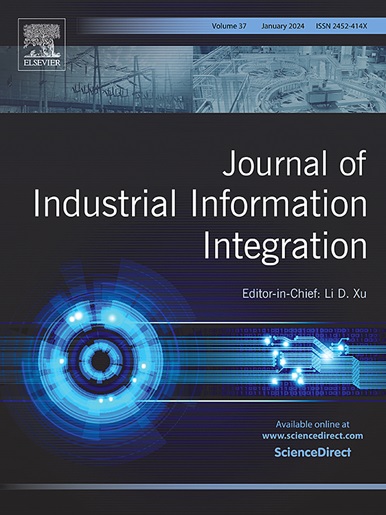情境感知认知增强现实装配:过去、现在和未来
IF 10.4
1区 计算机科学
Q1 COMPUTER SCIENCE, INTERDISCIPLINARY APPLICATIONS
引用次数: 0
摘要
自增强现实技术(AR)问世近三十年以来,许多研究都证明了它在为制造业的手工任务提供直观指导方面的潜力。这包括手工装配等操作,这些操作可以高效率地执行,并注重避免错误。尽管如此,据我们所知,目前还没有从整体角度对认知 AR 组装方法进行全面审查。这包括情境感知、视觉指示、环境交互、人为因素考虑以及对现实世界中 AR 组装部署的影响等方面。这些因素与当前工业 5.0 中以人为中心的制造实践尤为相关。自 2012 年以来,谷歌眼镜的发布和人工智能(AI)的进步极大地扩展了实际 AR 部署。因此,本综述以 2012 年作为文献收集的起点。本文旨在概述 2012 年至 2023 年间发表的情境感知认知增强现实(CA-CAR)组装作品。我们旨在识别和分类 CA-CAR 组装所需的情境模块,并分析其车间适应性的潜在技术障碍。值得注意的是,这项工作既提供了历史视角,又全面描绘了当前围绕 CA-CAR 装配应用开发的研究前景。此外,我们还讨论了 CA-CAR 组装领域的最新研究趋势和未决问题,以及潜在的未来研究方向。本文章由计算机程序翻译,如有差异,请以英文原文为准。
Context-aware cognitive augmented reality assembly: Past, present, and future
Since the inception of Augmented Reality (AR) nearly three decades ago, numerous studies have demonstrated its potential to provide intuitive instructions for manual tasks within the manufacturing sector. This includes operations such as manual assembly, which can be executed with high efficiency and a focus on error-avoidance. Despite this, to the best of our knowledge, there has been no comprehensive review of the cognitive AR assembly method from a holistic perspective. This includes aspects such as context awareness, visual instructions, environment interaction, human factor considerations, and the impact on real-world AR assembly deployment. These factors are particularly relevant to current human-centric manufacturing practices in Industry 5.0. Since 2012, the release of Google Glass and advancements in artificial intelligence (AI) have significantly expanded actual AR deployments. Consequently, this review takes 2012 as the starting point for the literature collection. The objective of this article is to provide an overview of the context-aware cognitive AR (CA-CAR) assembly works published between 2012 and 2023. We aim to identify and classify the necessary context modules for CA-CAR assembly, and analyze potential technical barriers to their shop floor adaptation. It should be noted that this work offers both a historical perspective and a comprehensive map of the current research landscape surrounding the development of CA-CAR assembly applications. Furthermore, we discuss recent research trends and open problems in the field of CA-CAR assembly, along with potential future research directions.
求助全文
通过发布文献求助,成功后即可免费获取论文全文。
去求助
来源期刊

Journal of Industrial Information Integration
Decision Sciences-Information Systems and Management
CiteScore
22.30
自引率
13.40%
发文量
100
期刊介绍:
The Journal of Industrial Information Integration focuses on the industry's transition towards industrial integration and informatization, covering not only hardware and software but also information integration. It serves as a platform for promoting advances in industrial information integration, addressing challenges, issues, and solutions in an interdisciplinary forum for researchers, practitioners, and policy makers.
The Journal of Industrial Information Integration welcomes papers on foundational, technical, and practical aspects of industrial information integration, emphasizing the complex and cross-disciplinary topics that arise in industrial integration. Techniques from mathematical science, computer science, computer engineering, electrical and electronic engineering, manufacturing engineering, and engineering management are crucial in this context.
 求助内容:
求助内容: 应助结果提醒方式:
应助结果提醒方式:


